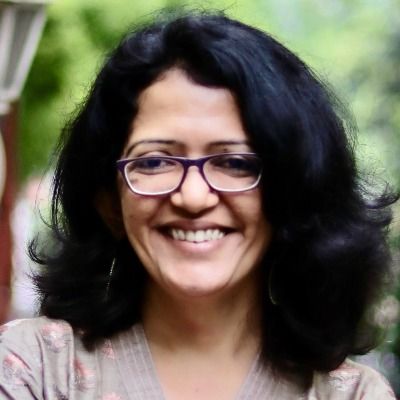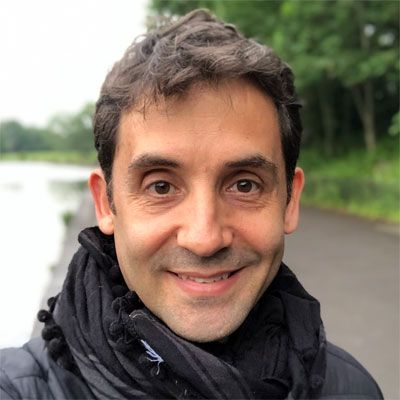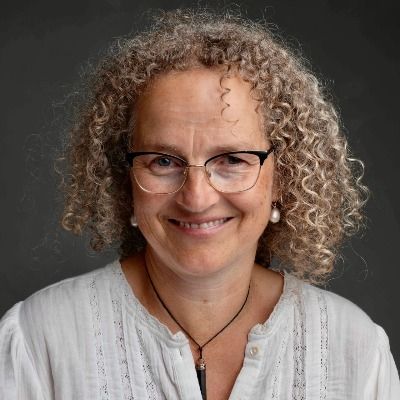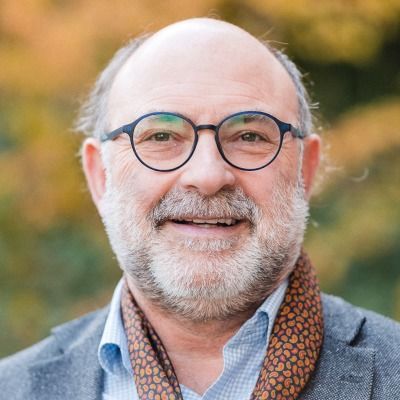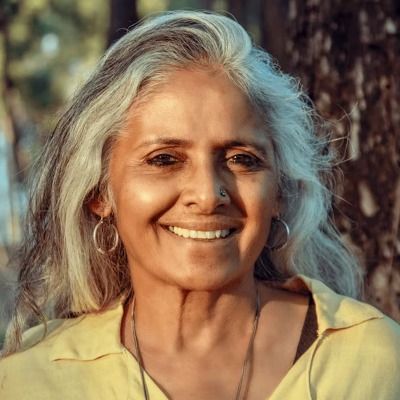Programs Resource Circle
Programs Resource Circle's purpose is to support CNVC and Certified Trainers in sharing NVC around the world through International Intensive Trainings (IITs), Virtual Intensive Trainings (VITs), and Continuing Education Trainings (CETs) for Certified Trainers (CTs).
In order to build on past learnings, this Circle will:
- adapt CNVC’s programs as much as possible to the local cultures and specific audiences that they are delivered to while remaining in accordance with the Rosenberg’s Gift.
- create access and attend to issues of resource disparity and inequity.
- create procedures and policies that anchor the commitments structurally.
- engage with existing projects, local teams and trainers, and others to build a collaborative, bottom up web of relationships before deciding whether or not it makes sense to conduct an IIT in a particular region
Originally the IITs were a way for our founder, Marshall Rosenberg, to spread his work. Marshall viewed IITs as an opportunity for participants to live NVC for a longer period as a community and experience its transformative power in intrapersonal, interpersonal relations, and social change. This is how this format was designed to offer a complete NVC curriculum. He chose trainers who he felt confident had skills to hold the intensity of large groups whilst embodying the process. This is why we did inherit the tradition of a system to include new trainers. Once he retired from teaching IITs, he appointed other trainers to carry on his work, building teams whose profiles would meet those essential qualities.
Over the years, CNVC has developed knowledge and capability around organizing, training, and setting criteria for selecting trainers, pertaining to scholarships, etc. Most of this knowledge resided in the heads, hands, and hearts of IIT staff, trainers, organizers, and participants, and more recently with the members of the IIT-Resource Team.
Today, much of this institutional knowledge moved away as staff left, Executive Directors changed and Trainers retired The Board would like to build on earlier knowledge and get some of it translated into transparent and systematized procedures and policies, and appoint the Programs Resource Circle with the mandate to offer clear guidelines and support to Trainers taking part in CNVC intensive trainings around the world.
When the Covid pandemic arose in 2020, CNVC suffered a heavy financial loss due to the cancellation of IITs events on a global scale and for an extended period of time of almost 2 years. This period brought a major advancement in online technology and VITs came as a result. This has created an opportunity of providing wider access to NVC around the world.
Finally, the Board would like CNVC to benefit from the feedback received from the community through the Environmental Scan and Community Talks and integrate these learnings through the procedures and policies of CNVC governing bodies, in this case, the Programs Resource Circle.
With this history and context, the Board gives the following mandate to the Program Resource Circle.
-
Evaluating how well the Rosenberg Gift is being honored
While the Board is primarily responsible for keeping the spirit of the Rosenberg Gift alive, the PRC maintains the spirit of the Rosenberg Gift by inviting IIT trainers and organizers' teams to be aware of, and follow the frame and scope of the Rosenberg Gift. PRC evaluates annually whether the IITs are consistent with the spirit of the Gift, and provides the Board with the results of the evaluation.
-
Quality Management
For most Certification Candidates, participating in an IIT is an invaluable experience on the path towards certification. Therefore it is part of the Certification requirements.
The PRC assures the quality of IITs, so that they remain the flagship of CNVC’s offerings to the world. IITs serve as a kind of masterclass where participants learn from a selected and diverse team of trainers that CNVC trusts to hold this special kind of training. The quality level is to be kept high enough for the assessors to recommend their candidates to attend.
The recent Covid pandemic has generated some behavioral changes around travel. Adding to it, climate change and economic disruption are making it more and more difficult for people to travel to in-person IITs.
There is an ongoing dialogue about whether or not VITs can substitute for IITs. The Board mandates PRC to continue the dialogue with ACC in order to settle this question and come to an agreement.
-
Financial sustainability
The Board is responsible for the general financial health of the organization and together with the Executive Director (E.D.) for how the money is spent and used within the programs.
PRC will create overall policies and principles when it comes to how to distribute financial assistance and scholarships, but then entrusts the E.D. and Organizer to make the actual decisions while taking into account these principles.
PRC will not make any financial decisions without discussing with the E.D. who may object, or request to postpone if CNVC finances are at risk.
The Board treasurer and E.D., together with PRC will meet and discuss twice a year to be aware of the financial sustainability of each event.
-
Application of PRC policies and guidelines throughout CNVC
PRC will create PRC policies and guidelines for CNVC training programs. In applying its policies and guidelines, PRC will appoint a PRC representative to engage with Operations when Operations:
- Faces a situation not yet covered by PRC’s policies or guidelines, or
- Would like to make decisions not in alignment with the policies and guidelines enacted by PRC.
PRC will hold bi-annual meetings with Operations to evaluate how the guidelines and policies have been applied. This will also be the opportunity for PRC to:
- Receive feedback on its policies and guidelines,
- Learn from what happens on the ground, and
- Integrate the learning to allow its policies and guidelines to evolve.
-
IITs and VITs:
PRC can use the existing resources as the basis for developing and systematizing policies and procedures for International Intensive Training (IITs) and Virtual Intensive Training (VITs) to support effectiveness and efficiency of these programs, as well as integrity and transparency.
- CNVC Dashboard for IIT (including a list of which trainers served on how many IITs, tracking of the maximum number of IITs per year, etc.):
- The Manual for Organizing an IIT
These policies and procedures will be used as a frame and guidelines by Organizers and Operations - E.D. and staff entrusted with organizing IITs.
These procedures and criteria include but are not limited to:
- selection of IIT trainers for more clarity and transparency
- contents of the curriculum in alignment with the Rosenberg Gift
- ecological, inter-cultural issues
- financial assistance and scholarships
- support in promoting the programs
2. Continuing Education for CTs:
PRC will create a format for offering training programs that will support CNVC Certified Trainers in their on-going growth and efforts to share NVC around the world.
Because this is a new area of development, PRC will design an advice process to collect feedback from Certified Trainers with a particular emphasis on IIT trainers, on what skills are needed to offer training in an IIT and/or training outside the trainers’ country and community.
Some skills include but are not limited to:
- inner resources: facilitating large groups, inter-cultural awareness, use of power with NVC consciousness, year-long programs that allow community living, etc.
- external resources: make sure the following criteria are explored and met: steps to connect and collaborate with local community, checking local indigenous and geographical aspects, what to do if there is no local NVC community yet, where can I find information on the local area and on whether IITs have taken place, etc.
After the advice process is completed, PRC will decide on the strategies whether these programs will be provided by CNVC, delegated to programs outside of CNVC, or some of both.
Especially in relation to the Board, Executive Director and Assessors Coordinating Circle.
The typical questions around organizing IITs have been answered and integrated into a document titled The Manual for organizing an IIT, and therefore the Programs Resource Circle will follow the Manual and design a process to change it if they deem it necessary.
- Who determines who the IIT trainers are (and the number of trainers)
- main Organizer of IIT or VIT
- curriculum, content, and purpose of IITs
New typical questions around organizing CNVC Programs have arisen and answers are developed here below taking into account the new status of the Programs Resource Circle as a CNVC body with decision-making power and accountabilities:
- Agreeing to the curriculum, content, and purpose of VITs
The Programs Resource Circle and the Assessors Coordinating Circle will make decisions together about the curriculum, content and purpose of VITs. They will also decide together whether VITs are equivalent to IITs. satisfies the requirements for certification.
- Agreeing to the curriculum, content, and purpose of CETs
Please refer to section Role-2 above.
-
Evaluating the effectiveness of a program and its trainers
The Programs Resource Circle together with the Executive Director will decide on the criteria to evaluate how effective a program is; for example: are Certification Candidates having their learning needs met, is there community building or social change projects emerging from the event in the region, is CNVC financially more sustainable, etc..
-
Replacing trainers or organizers if they withdraw after the original decisions are made
When a trainer withdraws from an intensive training after the original decisions are made, the Organizer in partnership with the E.D. will choose another trainer approved by PRC.
In the case of last minute withdrawal of a trainer (for example, the trainer cannot obtain a visa to get into the country where the IIT occurs, or is sick), then the Organizer in partnership with the E.D. will choose another trainer and inform the Programs Resource Circle.
- Replacing organizers if they withdraw from the IITs or VITs after the original decisions are made
The Executive Director and the Programs Resource Circle will reassess together whether to seek for a new organizer or postpone/cancel the event.
PRC will appoint a liaison who is the contact person for the E.D. and who provides updates to the CNVC Board twice per year (March and October) about decisions, changes, and other relevant activities of PRC.
PRC will send an update to Members in April of each year and communicate major decisions and developments as they occur. Typically, this update will be similar, or the same, as the report that the liaison presented to the Board and E.D. in March (see above paragraph).
For transparency and clarity of a pathway to become IIT trainers, PRC will make the dashboard (mentioned in section E. Roles-1) visible to community members on information such as how and where IITs occurred each year, names of trainers who have been part of IIT trainers team, where, how many times so far in their career and per year, how much money different IIT trainers and organizers received from CNVC, etc. to support our community of trainers to share the process.
The PRC will create general policies and guidelines (see Section E.3) which will include a section on financial resource allocation. The PRC will engage with Operations and Organizers and visa versa when:
- Faces a situation not yet covered by PRC’s policies or guidelines, or
- Would like to make decisions not in alignment with the policies and guidelines enacted by PRC
Scholarships: (reinstating lost policy)
For the purpose of transparency and equity of access to resources towards participants attending trainings, PRC will put a scholarship process in place. PRC will engage with Operations and Organizers and vice versa when:
- Faces a situation not yet covered by PRC’s policies or guidelines, or
- Would like to make decisions not in alignment with the policies and guidelines enacted by PRC.
PRC will also allocate 10 to 15% of CNVC’s overall (global) IIT gross profit to scholarships with more emphasis to participants:
- whose income is lower than what is needed to access IITs,
- from Global South as a way to accelerate their access to our resources such as Global South certification and expansion of NVC in the Global South.
For example, looking at the overall picture of IITs happening in a year, PRC may choose to allocate 25% of the 10% of CNVC’s overall (global) profits to an IIT in Kenya and 7% of the 10% to an IIT in Switzerland.
PRC is made up of 7 Certified Trainers, and are elected through an Election Survey coordinated by the CNVC staff that is similar to the one used in the CNVC Board election:
- Nominations: Any Certified Trainer (CT) can be nominated.
- Some helpful skills and qualities for members of the team are:
- they have served on IITs during the past 5 years;
- they are connected with one or more NVC communities
- they have experience engaging and connecting with people from different cultures;
- they think at a systems level;
- they enjoy to work collaboratively with others;
- they are not perfectionist - they know to say when is good enough for now
- Statement: If the CT nominated is willing to serve, they provide a short statement
- Voting: CNVC Members indicate their level of support for each candidate (from -3 to +3) and can add comments.
- Joining: Election candidates with the most support are invited to join the PRC
If one member of the PRC leaves before their term expires, the remaining members of the PRC will have two options:
- Wait until the next annual election to fill the seat; or
- Invite the person who finished with the next highest total in the previous election to fill the remainder of the term.
The membership of the PRC will be kept at a minimum of 3; if it goes below this, the PRC will invite the next election candidate on the list from the most recent election (to get back to a minimum of 3).
In order to nurture our growing global organization, if there are no members from the Global south, the PRC will find a suitable way to consult with and/or seek advice from individuals or groups from the relevant groups, who are able to offer advice and support".
Exception for the first election of PRC:
- Members of PRC will be elected and consist of 5 members. The IIT Resource Team remains in place until the election is complete, at which time the PRC will take on all previous roles and responsibilities of the IIR-RT.
- In order to preserve the organizational memory - if there are no former IIT-RT members elected - the elected PRC will engage, for the first year, with at least 1 former IIT-RT member acting as advisors.
- The newly-formed PRC will continue all activities and responsibilities left over from the former IIT-RT. The elected members are encouraged to consult and take advice from former IIT-Resource Team members.
Term:
- For the initial election, terms will be staggered: 3 people with 2-year terms and 2 with 1-year terms. For all subsequent elections, terms will be 2 years.
- CTs can serve in the PRC for up to six consecutive years, after which they must leave for at least one year before being eligible to rejoin.
